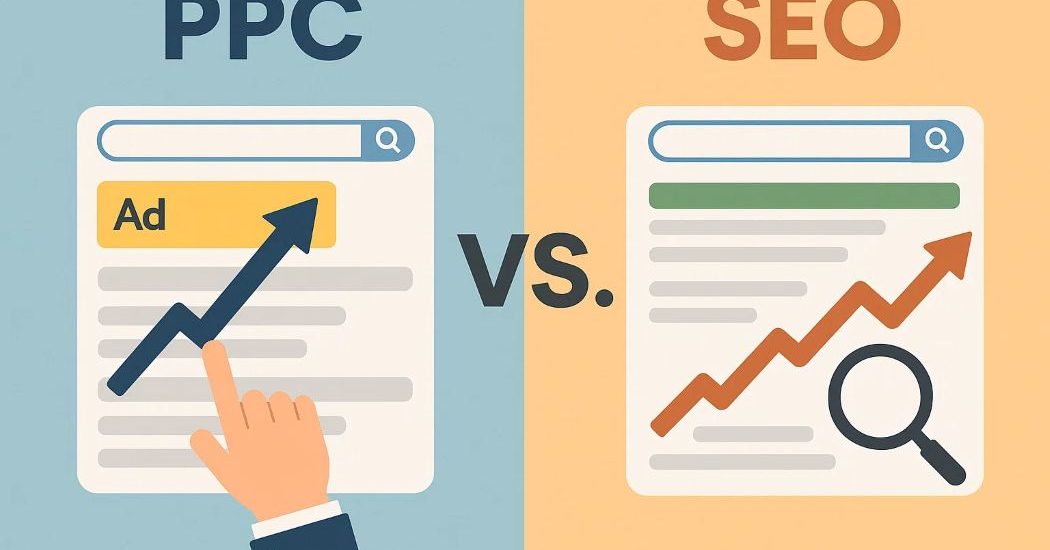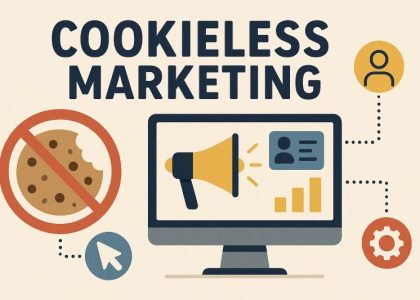In the evolving landscape of digital marketing, PPC (Pay-Per-Click) and SEO (Search Engine Optimization) remain two powerful strategies for driving traffic and growing your online presence. While both aim to increase visibility on search engines like Google, they operate in very different ways.
As we step into 2025, many businesses—especially startups and small enterprises—are asking: Should we invest in PPC, SEO, or both?
Let’s break it down in a clear, actionable comparison so you can make the right choice based on your goals, timeline, and budget.
What is SEO?
Search Engine Optimization (SEO) is a long-term strategy that improves your website’s organic ranking on search engine results pages (SERPs). By optimizing your site content, speed, structure, and backlinks, you increase your chances of appearing when users search for related terms.
🔍 Key Elements of SEO:
- Keyword research and usage
- On-page optimization (titles, meta tags, structure)
- Technical SEO (mobile-friendly, page speed, XML sitemap)
- Content quality and relevance
- Backlinks from reputable sites
✅ Pros of SEO:
- Long-term visibility
- High credibility and trust
- Cost-effective over time
- Compounds with consistency
❌ Cons of SEO:
- Takes time (3–6 months minimum)
- Requires ongoing updates
- Competitive for high-volume keywords
- Algorithm changes can impact rankings
What is PPC?
Pay-Per-Click advertising is a paid method of getting immediate visibility on search engines. With platforms like Google Ads or Meta Ads, you bid on keywords and pay a fee each time someone clicks on your ad.
🔥 Key PPC Channels:
✅ Pros of PPC:
- Instant visibility and traffic
- Easy to measure and track
- Full control over targeting and budget
- Great for promotions and time-sensitive offers
❌ Cons of PPC:
- Costs increase with competition
- Traffic stops when budget runs out
- Learning curve for ad setup and optimization
- Click fraud and ad fatigue risks
PPC vs. SEO: Key Differences
| Feature | SEO | PPC |
|---|---|---|
| Cost | Free traffic (but time-consuming) | Pay for every click |
| Speed | Slow to gain traction | Immediate results |
| Longevity | Long-lasting presence | Ends when ads stop |
| Trust Factor | Higher (organic) | Lower (marked as “Sponsored”) |
| Conversion Rate | Moderate | Often higher due to precision |
| Analytics | Requires tools (GA, GSC) | Built-in ad performance metrics |
When to Invest in SEO
SEO is ideal if:
- You want long-term growth
- You’re building brand credibility
- You have time to wait for results
- You want to reduce paid ad dependence
- You produce consistent, helpful content
SEO works best for blogs, resource centers, e-commerce product pages, and niche service providers.
When to Invest in PPC
PPC is perfect if:
- You need quick traffic or leads
- You’re launching a new product or offer
- You’re running a limited-time promotion
- You want precise control over audience targeting
- You’re collecting data for SEO strategies
PPC is highly effective for lead generation landing pages, sales funnels, and time-bound campaigns.
The Smart Strategy for 2025: Combine Both
In 2025, a hybrid strategy is the smartest approach.
- Use PPC for quick wins and immediate visibility.
- Build an SEO foundation that grows over time.
- Analyze PPC data (top keywords, CTR, bounce rate) to guide your SEO content strategy.
- Retarget PPC visitors with SEO-optimized blog posts and offers.
- Let SEO reduce your long-term customer acquisition cost (CAC) while PPC supports scale.
Conclusion
PPC and SEO serve different purposes—but they work best together.
If you’re short on time and need fast results, start with PPC. If you’re building a brand for the long haul, prioritize SEO. And if you want sustainable growth, integrate both.
In 2025, digital marketing isn’t about choosing one or the other—it’s about creating a data-driven, balanced ecosystem that brings in traffic today and tomorrow.
🔑 Final Recommendation
- Start with PPC if you’re launching or testing.
- Invest in SEO for stability and compounding results.
- Use PPC insights to fuel your SEO content.
- Retarget and remarket using both for better ROI.





